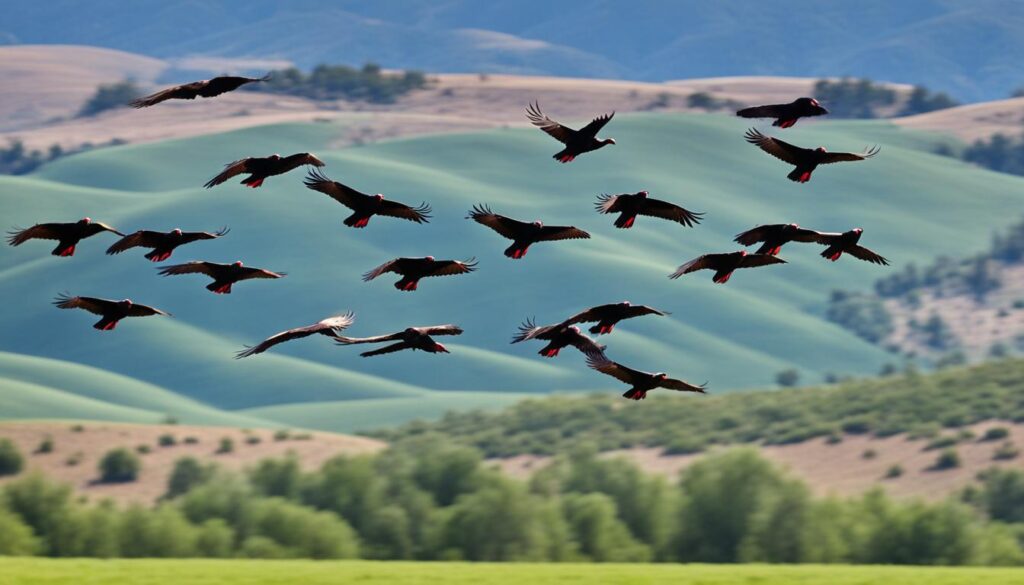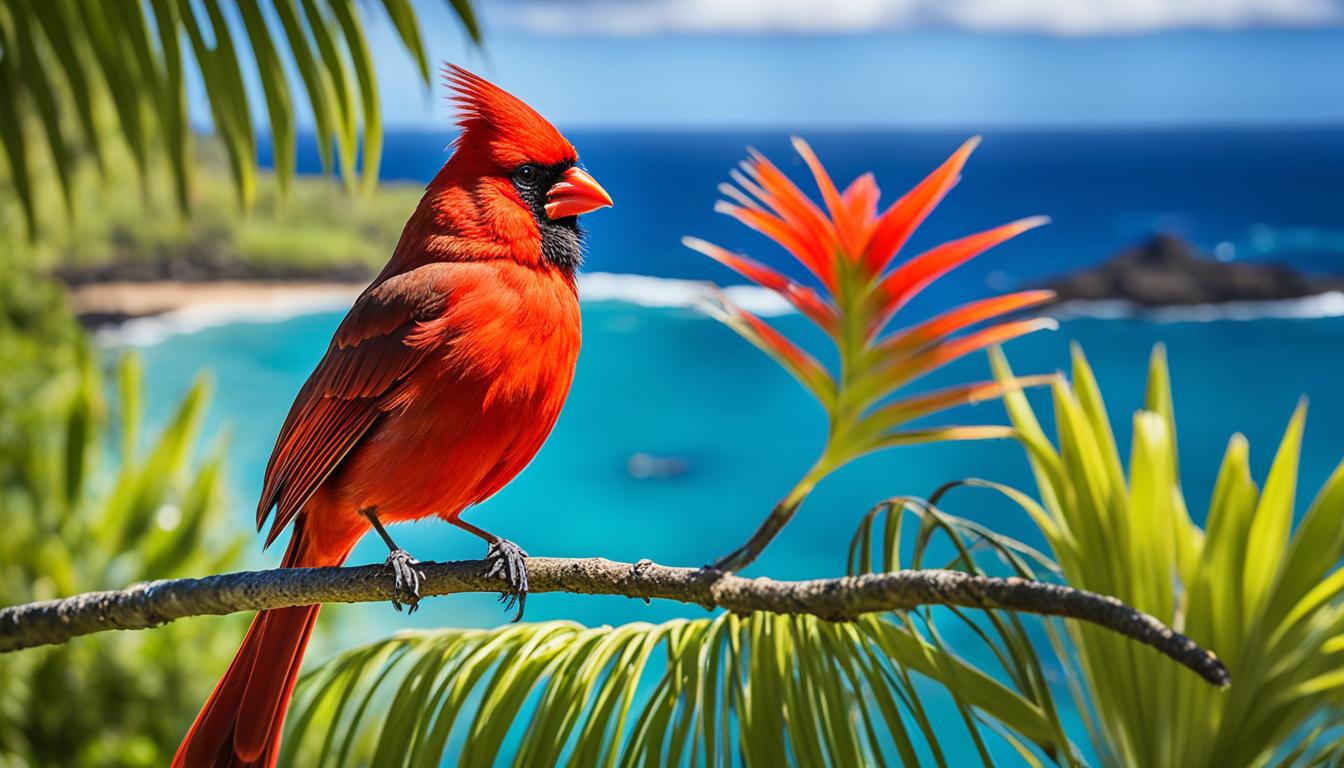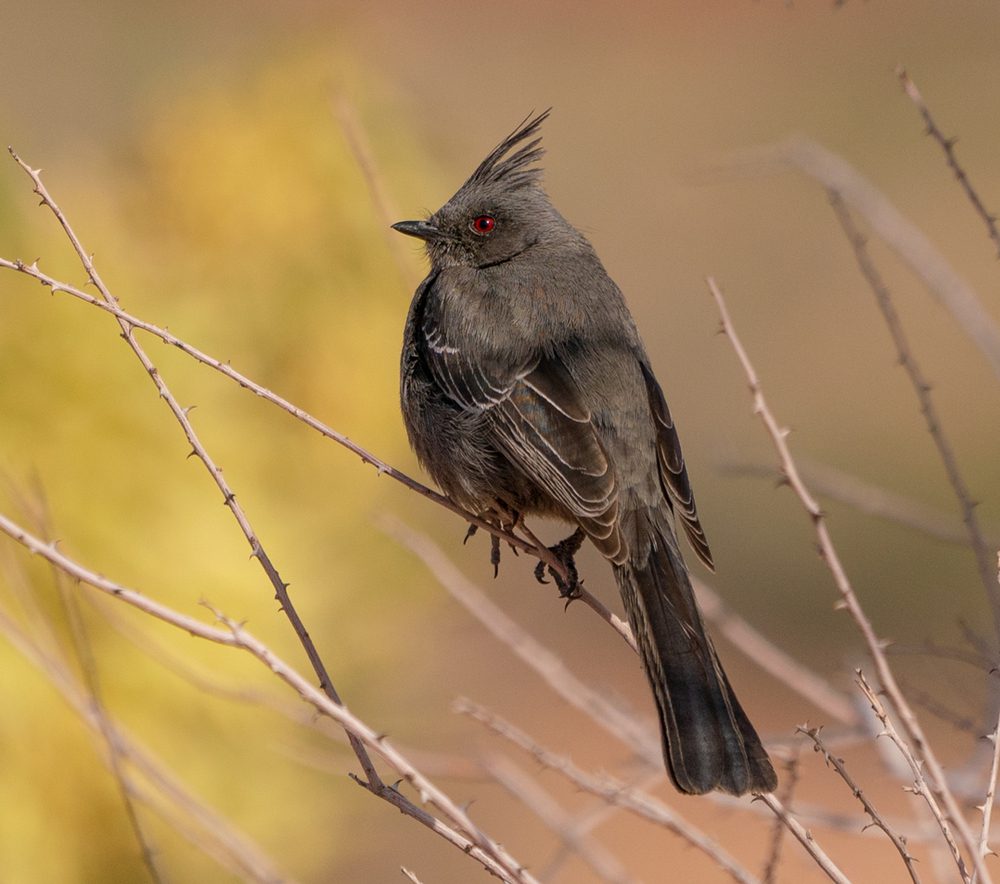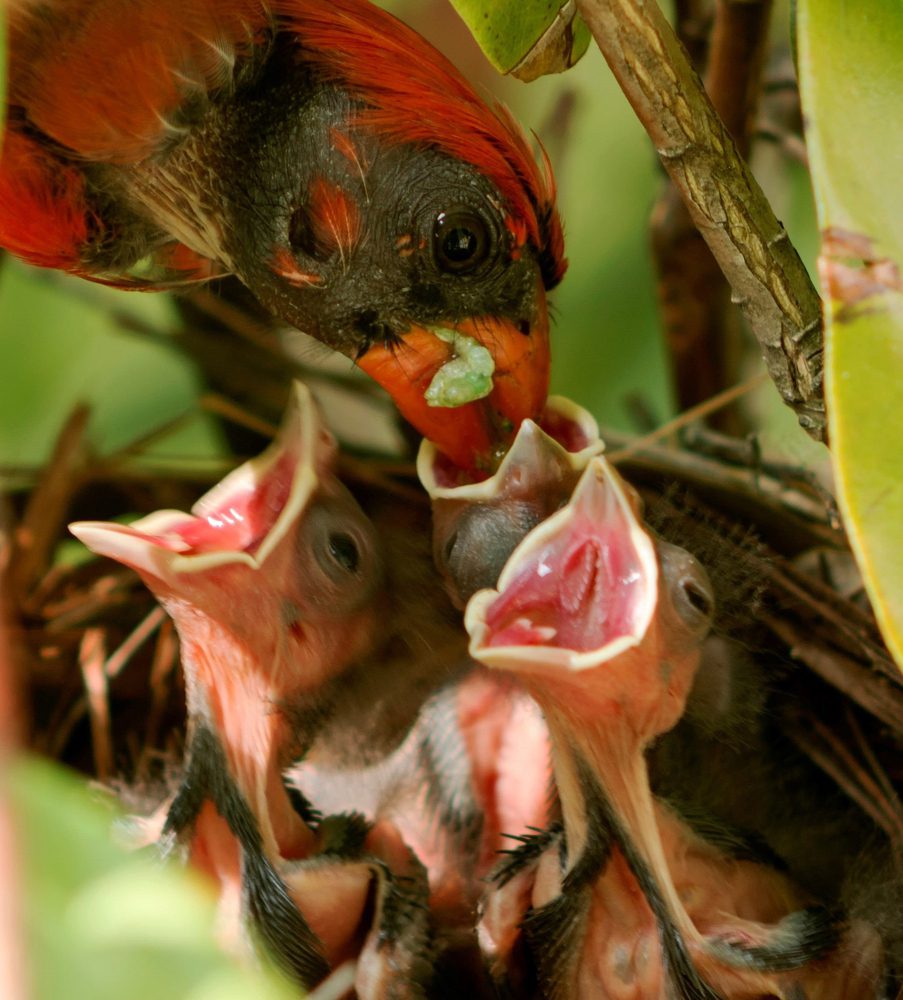Turkey Vulture Migration – Turkey Vultures are stunning birds which can travel up to 250 miles each day during migration! Each year they cover thousands of miles as they search for ideal sites where they can feed and build nests – be amazed as we take you on this captivating voyage of the turkey Vulture’s migration journey and learn some exciting ways they travel during their voyage!
Key Takeaways:
- Turkey Vultures can travel over 250 miles in just one day during migration.
- Migration is driven by food sources and nesting locations for these birds
- covering thousands of miles annually on long journeys.
- Understanding patterns of migration provides vital insights into turkey vulture behaviour
- Conservation efforts are vitally important if we want to preserve their populations and protect the species as much as possible.
Table of Contents
Turkey Vulture Migration Feeding Habits and Diet
Turkey Vultures have a diverse diet that primarily consists of carrion, which helps control the spread of diseases and maintains ecological health.
They are skilled scavengers that can locate food using their highly developed olfactory senses and keen eyesight.
Their diets include:
- Small rodents
- Medium-sized mammals
- Large mammals
- Birds
- Reptiles
Additionally, they sometimes supplement their diet with fresh meat, fruits, and invertebrates.
Understanding their feeding habits is crucial for appreciating their role in nature’s cleanup crew and supporting vulture conservation efforts.
“Turkey Vultures play a crucial role in maintaining ecological health by efficiently removing carrion from the environment, which helps control the spread of diseases.”
– Dr. Sarah Jones, Vulture Conservationist
Studies on vulture migration routes and tracking have provided valuable insights into their foraging patterns and movement across vast territories.
These findings aid in understanding the importance of conserving vulture populations and their habitats.
Tracking Studies: Vulture Movement and Behavior
Research conducted by the Center for Avian Migration Studies reveals fascinating data on turkey vulture behavior and their migratory journeys.
Using advanced tracking devices, researchers have been able to trace their migration routes and monitor their behavior throughout the year.
Table: Turkey Vulture Feeding Habits and Diet Statistics
| Food Source | Percentage |
|---|---|
| Carrion | 85% |
| Small Rodents | 5% |
| Medium-sized Mammals | 4% |
| Large Mammals | 3% |
| Birds | 2% |
| Reptiles | 1% |
Understanding the dietary preferences and behaviors of these majestic birds is essential for their conservation and the balance of ecosystems they inhabit.
Turkey Vulture Habitat and Nesting Habits
Turkey Vultures are highly adaptable birds that thrive in many different habitats – grasslands, savannas, forests and suburban environments are just a few examples – making their widespread distribution across both North and South America possible.
Turkey Vultures have relatively straightforward nesting strategies when it comes to selecting suitable places for them to nest – they prefer grounded nests in protected environments like hollow logs, dense thickets or deserted burrows which offer protection and security for their young.
Nurturing and Feeding
Once a pair of Turkey Vultures have established a nesting area and taken responsibility for caretaking their young, both birds work to ensure health and survival for both.Hatching Turkey Vulture eggs takes 38-41 days.
following hatching, parents care for their chicks for approximately 10 weeks by feeding them food that has already been digested to nourishment their offspring.
Habitat Threats and Conservation
Unfortunately, Turkey Vultures and their habitats are facing increasing threats from human activities such as urbanization, deforestation, and habitat destruction. These factors can disrupt their nesting sites and limit their access to food sources, potentially impacting their population size and overall survival.
Conservation efforts play a vital role in ensuring the long-term survival of Turkey Vultures and protecting their habitats. Promoting awareness about the importance of preserving natural ecosystems and implementing sustainable practices are crucial steps towards safeguarding their populations.

By understanding the habitat preferences and nesting habits of Turkey Vultures, we can better appreciate their role in the ecosystem and take action to preserve their habitats. Protecting these magnificent birds and their environments is essential for maintaining healthy ecosystems and sustaining biodiversity.
Turkey Vulture Behavior Patterns
Turkey Vultures are fascinating birds to study due to how they live and interact. Scientists have gained great insights by tracking where and how these raptors travel, scientists have discovered some truly astounding facts that help explain this species of bird as scientists uncover surprising behaviors they employ that help ensure survival within groups of birds.
Turkey Vultures tend to flock together and build their nests near each other in large colonies. This strategy serves two important functions, firstly it makes them harder for animals that might want to eat them to reach them directly and secondly when temperatures dip they can snuggle closer together for warmth.
Turkey Vultures may prefer living together when at home, but when it’s time for food they tend to forage on their own – this shows their clever ability at finding and eating dead animals without help!
Turkey Vultures demonstrate remarkable flight patterns that are distinct and easily recognizable. When in flight, they form a distinctive V-shaped pattern, soaring gracefully across the sky. However, their flight is often described as unsteady and wobbly, adding to their unique charm.
Turkey Vultures have a unique way of showing who’s in charge in their groups by performing special tricks in the air, like spiraling and diving slowly. These moves are not just for show; they help the vultures figure out who leads the group and keep everything organized.
Watching how Turkey Vultures act helps scientists and people who study animals understand how they live, get along, and survive. This knowledge is super important because it helps us find better ways to protect these cool birds and make sure they stay around for a long time.
| Behavior Patterns | Insights |
|---|---|
| Communal Nesting | Protection against predators and temperature regulation |
| Individualistic Foraging | Resourcefulness and survival instincts |
| Aerial Acrobatics | Establishing social hierarchy and dominance |

Conclusion
Turkey Vultures are incredible birds that help our environment remain clean and healthy by migrating, eating certain food sources, living in certain spots, and acting in ways which benefit nature. Understanding and caring for these magnificent creatures are paramount as they play such an essential part in maintaining biodiversity while taking care of waste in an eco-friendly manner.
Turkey Vultures depend on safe living spaces to survive over the long haul and keep their numbers intact, so anything which deters their survival such as too many buildings being constructed, or their homes being demolished is of immense concern to these birds and we need to work towards keeping their numbers safe so they remain part of our world. By spreading awareness of how important Turkey Vultures are we can ensure they stick around.
As we watch Turkey Vultures soar across the sky, let’s remember their important role in maintaining nature balance. By helping save Turkey Vultures and paying attention to how many there are in our environment, we’re doing our part in protecting these beautiful birds while improving it further.
FAQ
What are the migration patterns of Turkey Vultures?
What is the behavior of Turkey Vultures during migration?
How do Turkey Vultures find their way during migration?
Are Turkey Vultures an endangered species?
How can I help conserve Turkey Vultures?
Source Links
- https://www.tehachapinews.com/lifestyle/pen-in-hand-turkey-vultures-they-re-back-big-birds-return-on-their-annual-migration/article_bbee74cc-4369-11ed-a9c7-fbaabe5e8a35.html
- https://floridawildlifetrappers.com/birds/turkey-vulture/understanding/behaviors-habitats/
- https://floridawildlifetrappers.com/birds/turkey-vulture/understanding/





